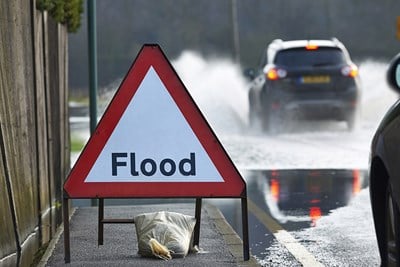Homeowner’s flood insurance is a smart financial investment. However, before you consider purchasing flood insurance you should be familiar with the terms associated with it. Here is a look at the most commonly used terms for home flood insurance.
- Flood: Flooding has a slightly different legal definition than you might think. Water is not considered a flood unless it is covering at least two acres of normally dry land. However, if two other flood conditions are met even without being over two acres, this is also considered a flood. These conditions include an overflow of waters, an accumulation of surface waters, mudflow, or the collapse of a shoreline structure directly due to erosion or undermining from water sources.
- National Flood Insurance Program (NFIP): This program was started by the federal government in 1968 as a way of providing flood insurance to U.S. citizens since standard homeowners insurance does not cover flood damage.
- Flood Insurance Rate Map (FIRM): A flood insurance rate map outlines the areas that have been determined to be at a high risk of flooding. If your property is within a high-risk area then you will most likely be paying more for your home flood insurance.
- Zone: A zone is a geographical area on the FIRM that shows the types of flooding common in an area as well as the severity of flooding that can be expected. Different zones may be eligible for different flood insurance policies.
- Non-Residential: Non-residential buildings are simply buildings not meant for continual habitation. These buildings will be under different policies and regulations for flood insurance. This includes churches, clubhouses, farm buildings, and warehouses. However, other buildings can be designated as non-residential as well.
- Preferred Risk Policy (PRP): A preferred risk policy is a policy that offers combinations of building and content coverage for fixed premiums. Properties must meet eligibility requirements for a preferred risk policy.
- Emergency Program: Communities may not be participating in the NFIP right away, but the phase in which they begin participating is called the Emergency Program. During this time, only small amounts of flood insurance are made available through the NFIP.
- Federal Policy Fee: When renewing or creating a new flood insurance policy, the policyholder must pay a flat charge to the federal government. This charge is used to pay administrative expenses that occur during the processes of the NFIP.
- Increased Cost of Compliance (ICC): ICC is an increase in coverage for property owners who must go above and beyond the cost of repair in order to comply with state or local flood requirements. Actions that may be covered by ICC include relocation, demolition, or flood-proofing.
- Replacement Cost Value (RCV): This is the money needed to replace a structure with identical materials and construction without consideration for depreciation.





